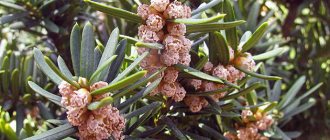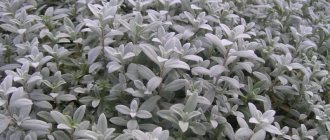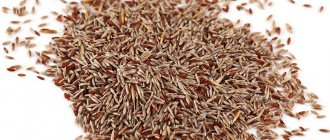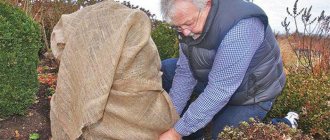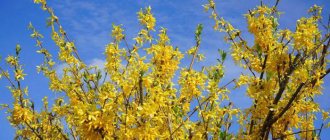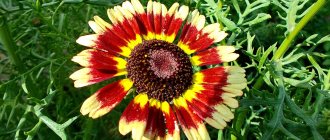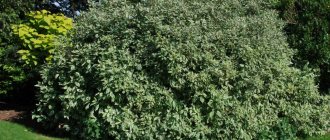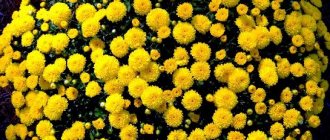Features of growing at home
Indoor sedum and outdoor sedum are two different plants, even if they belong to the same variety. Due to the inability of the sedum to develop its root system deeper, it is more difficult to plant and care for such a plant. Indoor sedums need regular fertilization.
Location and lighting
In addition to problems with nutrients, indoor sedums often lack light. When choosing the most illuminated place, the main thing is not to expose the plant to direct sunlight, otherwise it can quickly dry out and fade.
Temperature and humidity in the room
Sedum is a heat-loving and moisture-loving plant, so for comfortable growth it must be kept in a room in which the average temperature in summer does not fall below 20-23 degrees, and in winter - below 16-18.
Even those types of sedums that are frost-resistant in open ground quickly lose their natural characteristics and become quite vulnerable in indoor conditions.
To maintain a sufficient level of humidity, sedums need to be regularly sprayed with a spray bottle. Depending on the variety, this procedure should be carried out from once a day to once every 2-3 days.
Substrate and pot requirements
The soil for sedums is selected organic, but not clean. Sand is added to each substrate for sedum, and in some types clay and small stones are also added.
The drainage must be placed on the bottom of the pot in a thick (2-3 centimeters minimum) layer. It is best to use small stones or brick chips.
There are no special requirements for a vessel for sedums, the main thing is that it retains heat well. It is best to choose pots made from natural materials.
Reproduction
Indoor sedum reproduces in the same ways as “street” sedum. The only difference is that the “baby” plants from the pot first need to be dried a little, and only then placed in water. Most often, they are oversaturated with moisture, so if you immediately place the cutting in liquid, it may begin to rot. Indoor sedum also reproduces by dividing the bush, but this procedure is carried out only during transplantation, and therefore is less popular.
Caring for sedum at home requires more regular watering, fertilization and proper selection of substrate, but in comparison with hundreds of other indoor plants, it still remains the most unpretentious and simple.
Sedum is a plant that amazes with its diversity and ease of care. By choosing the right variety of sedum, a novice gardener can provide himself with a favorite for many years that reproduces easily and delights with bright flowering every year.
Watering
You need to water the sedum more than moderately: it is better to underwater than to overwater. Sedum stores water in its leaves and evaporates very little of it. If you are in doubt whether to water or not, it is better not to water. Even in the hottest summer, the soil in the pot should dry thoroughly between waterings. For this reason, you can plant sedum in a pot with other flowers, but these flowers should not require frequent watering.
Sedums are very tenacious plants. There are known facts that when dried and squeezed between the leaves of a herbarium, sedum remains alive for a long time. Once in favorable conditions, it begins to grow again. Therefore, watering poorly dried soil in a pot is simply unacceptable.
In winter, soil moisture is halved. But, no matter how little sedum needs watering, do not forget that this is not a desert cactus. In summer, water at least once a week, in winter - half as often. And never allow water to stagnate in the pan. This most often leads to the death of the plant.
This may be interesting: Prickly pear - growing at home
Sometimes the sedum grows, covering the entire pot with a green sheet, which makes it difficult to get to the ground when watering. Do not believe those who advise watering it through a tray or by immersion. Often these methods lead to the death of the plant due to waterlogging. It is better to use a syringe without a needle.
Caring for sedum at home
Most species can be classified as unpretentious plants that even lazy gardeners can grow. The sedum makes very modest demands on its owner and needs the minimum to feel good.
Lighting. Sedum is very light-loving and needs a maximum level of illumination throughout the year. Direct sunlight is preferred. When choosing a location, the best option would be south-facing windows. The eastern and western ones will be less suitable for it, and the northern one cannot do without additional lighting.
In winter, artificial lighting with phytolamps supporting a 10-hour daylight hours will also require sedum on southern windowsills. Otherwise, the succulent will not only not bloom, but may also lose its leaves.
Temperature. This succulent can withstand large temperature changes, but the optimal summer range for it lies between 24 – 28 °C. In winter, it is desirable to keep it cool at 8–12 °C, which will slow down vegetative processes and prevent shoots from stretching in the dark season. However, if the plant has enough artificial light, it is not necessary to reduce the air temperature around it.
Watering is carried out very carefully. At certain periods, both flooding and overdrying of the earthen coma are harmful for sedum
So, in summer, watering should be regular and moderate, as the top layer of soil dries out. If the plant is not watered on time, it may lose some of its leaves. And although such a loss will not affect its health, since this is the plant’s natural protection from drought, it will cause significant damage to its appearance.
In winter, on the contrary, it is extremely undesirable to flood sedum. When kept cool, the process of water evaporation slows down greatly, and prolonged waterlogging of the soil will lead to rotting of the roots. During this time, watering the plants is significantly reduced, allowing the soil to dry by half.
Air humidity. The succulent is accustomed to dry air, but spraying will help wash away dust from the leaves. It is not recommended to use a warm shower for these purposes, since in many species the leaves fall off at the slightest touch, and jets of water can lead to baldness of the plant.
The soil mixture for sedum should be loose, air- and moisture-permeable. Ready-made soil for cacti and succulents is well suited for it. You can also use ordinary garden soil of neutral acidity, adding coarse river sand to it.
For planting, it is advisable to choose wide, flat pots, since the root system of this succulent is superficial. At the bottom of the pot it is necessary to create a good drainage layer of expanded clay or clay shards.
Feeding. During the growing season, the plant is fed once a month with specialized complex fertilizers for cacti and succulents. From mid-autumn, feeding is stopped and resumed only with the arrival of spring.
Only young plants need replanting, while adults are usually renewed every 3 to 4 years. Some species, for example Morgana sedum, are best touched as little as possible and not disturbed by replanting, as they are truly touchy - they lose their leaves at the slightest touch. Replanting such plants will not only not help or revive them, but, on the contrary, will damage them, completely depriving them of their attractiveness.
Reproduction. At home, sedum is most often propagated by leaf and stem cuttings, and less often by seeds. Before planting, the cuttings are dried for 24 hours and then buried in the prepared soil. No cover required. The rooting process is most successful at 16–20 °C; roots appear in approximately 3–4 weeks.
Seeds are sown in spring or autumn, scattering them on top of the ground and not digging them in. The germination process takes place in bright light and high humidity, for which the bowl with seeds is covered with glass or film and placed under a lamp.
Diseases and pests. Sedum is practically not affected by pests.
Diseases are most often caused by improper plant care.
– Shedding of leaves is especially characteristic of some species and occurs with a lack of watering, light, or even simple touches. – Root and root collar rot – too frequent watering, especially when kept cold. – Leaves dry and wrinkle – lack of moisture and too high air temperature. – Stretching of stems and internodes – the plant lacks light.
Pests of sedum prominent
Among the most common parasites that sedum is attacked by are the following insects:
- Aphid
. The parasite feeds on the leaves and stems of the plant. As a result, the sedum bush becomes weak and may stop blooming. For control, insecticidal preparations are used: “Fufanon”, “Biotlin” or “Iskra”. - May Khrushchev
. The larvae of this pest cause damage to the root system, and adult insects feed on leaves and stems. For control, complex insecticides are used: “Confidor”, “Aktara” or “Strela”. - Pseudo-caterpillars of true sawflies
. These pests appear in mid-summer and cause damage to the leaves of sedum. For control, a solution of the insectoacaricidal agent “Actellik” is used, which is sprayed on the plants until the parasites completely disappear.
2. Sedum planting and care
2.1. Plant propagation
Growing sedum is pure pleasure. It is very easily propagated by leaf or stem cuttings or division.
- It is enough to take stem cuttings about 2 cm long and separate them from the mother plant with a sharp sterile instrument.
- The cut site must be dried for several days before planting.
- Before planting, remove the lower leaves from the cuttings.
- Rooting is carried out in damp sand under a cover made of a plastic cap or glass for 2 - 4 weeks.
- Young plants are kept at a temperature of about 23 ° C; rooting of cuttings is quite simple.
- Successful rooting of plants will be indicated by new growth emerging.
- Young alchids should not be exposed to direct sunlight.
Even leaves scattered on the surface of the soil take root easily, and cuttings that are left to dry can form young leaves right in the axils of the leaves.
Mature plants that have grown at home can be divided into several parts using a sharp, sterile instrument. Make sure that each division receives its own root system and well-developed above-ground part.
Some varieties of sedum form small plants around themselves - babies, which are separated after they have formed their own roots and planted in separate cups.
Another method of propagation is to sow seeds in spring in a moist and very porous substrate. Seedlings are picked when the first true leaves appear - small bushes are planted in separate containers.
2.2.How to replant sedum
The sedum plant is replanted in the spring, as it grows, when the roots have filled the substrate.
- For planting, use shallow bowls with large drainage holes.
- Sedums do not like spacious pots, as they have a very modest root system, and in addition, excess soil accumulates moisture and the plants rot.
- Mature plants need to be replanted approximately every 3 to 4 years.
- The surface of the soil can be covered with a layer of coarse river sand or small multi-colored pebbles - this will add attractiveness to the composition, and, in addition, will allow moisture to move deeper into the soil faster.
- After planting in fresh soil, watering is stopped for several days, allowing the plant to heal possible damage to the root system and adapt to its new conditions.
2.3.Growing homemade sedum, pruning
Very unpretentious indoor plants that can tolerate neglect. Only some varieties require care and adherence to certain agricultural techniques.
In addition to being easy to grow, many types of sedums look great in hanging baskets and make very showy plants.
It is very easy to maintain a compact and bushy plant shape with periodic trimming.
Some varieties are pinched at a young age to form additional side shoots.
To prevent the plant from tilting towards the light source, turn the pot a quarter turn once a week - this measure will allow you to form symmetrical, strong bushes.
2.4.When sedum blooms
Spring Summer. Plants grown indoors rarely bloom - this is due to the lack of light and the lack of a cool dormant period in the winter months.
2.5.Soil
Tolerates fairly nutrient-poor soils with excellent drainage.
Leaf soil can be used as a nutritional base.
The mixture should contain a large amount of coarse river sand. Perlite and fine expanded clay are also added to improve drainage.
You can sprinkle a small amount of charcoal onto the substrate to make the soil more loose.
Ready-made soils for cacti and succulent plants are suitable for growing.
A sufficient layer of drainage is placed at the bottom of the pot.
2.6.Pests and diseases
- Dry, brown spots on the leaves appear as a result of excess moisture, especially in the autumn-winter period.
- Plants rot relatively easily and may die.
- Overwatering can cause leaves to become limp and soft.
- When grown in partial shade, plants stretch out - the distance between the internodes increases.
- The impact of cold drafts is manifested in the fact that the sedum loses its lower leaves and exposes the stems.
- Sedum turns yellow and crumbles when the root system rots.
- When grown outdoors, some plants turn black when frost occurs.
Plants can be attacked by aphids, thrips, and weevils.
Description of sedum prominent
The plant belongs to the genus of succulents and the Tolstyankov family. Sedum (sedum) is found in Japan, China, and Europe. Many ornamental varieties have been bred for cultivation in open ground and in pots. Sedum can be distinguished from other flowers by several characteristics:
- The height of the bush is 25-80 cm.
- The leaves of the sedum range from grayish to dark green. They are very thick because the plant accumulates moisture in them, which it uses during periods of drought.
- The stems are light green and may have a purple or burgundy tint.
- When sedum blooms, several buds form large inflorescences up to 25 cm in diameter.
- Sedum flowers stand out in a wide variety of shades: pink, violet, purple, white, lilac.
- Depending on the variety, flowering begins in mid-May and continues until autumn.
Transplanting a plant
Sedum is a light-loving crop, so the place where to plant sedum should be light. Under natural conditions, the plant grows among rocks and stones.
In fertile soils, the decorative properties of sedum will manifest themselves most effectively. The flowering will be lush and long-lasting, and the greenery will be bright and shiny.
Planting by seeds
Sedum planting technology:
- Seeds are sown in spring (late March–April) in boxes or containers that are filled with garden soil with coarse sand. The seeds are buried, leaving an interval of at least 5 cm between them.
- Moisten the crops generously with water. Cover with glass or film and send for stratification.
- The room should be cool with a temperature between 1 ℃ and 5 ℃ (refrigerator, underground, basement).
- During the entire stratification period, the crops are ventilated and care is taken to ensure that condensation does not collect on the glass or film. The soil is constantly moistened.
After 2 weeks, the crops are returned to a room with a temperature of up to 20 ℃. 20–25 days after sowing, the first shoots should appear.
Note! The soil should not be allowed to dry out completely. Sometimes individual gardeners use winter sowing
They are sown according to the same scheme, but sent to the greenhouse for stratification. In April, seedlings are brought home for growing
Sometimes individual gardeners use winter sowing. They are sown according to the same scheme, but sent to the greenhouse for stratification. In April, seedlings are brought home for growing.
Planting seedlings
Sedum seedlings are small. After their friendly appearance, the glass or film is removed. Plants dive if they were not planted in a separate pot. Seedlings are traditionally cared for:
- watered;
- loosen;
- hardened.
Beginning gardeners sometimes find it difficult to plant sedum correctly so that it takes root easily:
- When consistently warm weather sets in and night frosts stop (late May), it’s time to transplant the seedlings to a permanent location.
- Before planting, fertilize the soil with organic matter. The distance between planting holes is at least 20 cm. Plants are watered abundantly.
The unpretentious sedum grows on poor soils, but it does not do well without sunlight, although light partial shade at the growing site is possible. Planting and caring for ground cover sedum is no different from growing other varieties.
The first flowers on the bushes will bloom in 2–3 years
Gardeners do not recommend growing a bush for more than 5 years in one place. The plant is made healthier by changing the place of cultivation.
How to transplant sedum? Step-by-step instruction:
In early spring, before the sedum “wakes up” after winter dormancy, the bush is carefully dug up. Using a sharp knife, separate the parts, leaving the roots on each bud, and put them in the shade for 2–3 hours. Treat the separation areas with fungicidal agents before planting the plant in a new flowerbed.
Transplanting sedum prominent
Mature plants aged 4 to 5 years lose their flowering brightness over time. To rejuvenate, the prominent sedum must be replanted to a new location every few years. The procedure is carried out in early spring, as soon as the threat of frost has passed. The transplant goes like this:
- The bush should be dug up and divided in half.
- The cut areas should be sprinkled with crushed coal or ash.
- A new place is prepared for each bush: the soil is loosened and a drainage layer is arranged.
- The halves of the mother plant should be planted at a distance of 30-40 cm from each other.
Planting a plant
Sedum is a light-loving crop, so the place where to plant sedum should be light. Under natural conditions, the plant grows among rocks and stones.
In fertile soils, the decorative properties of sedum will manifest themselves most effectively. The flowering will be lush and long-lasting, and the greenery will be bright and shiny.
Planting by seeds
Succulent crops are grown from seeds or seedlings. The most troublesome method is seed. But for many gardeners it is preferable. Planting material prepared independently is a guarantee of the health of the future plant.
Sedum planting technology:
- Seeds are sown in spring (late March–April) in boxes or containers that are filled with garden soil with coarse sand. The seeds are buried, leaving an interval of at least 5 cm between them.
- Moisten the crops generously with water. Cover with glass or film and send for stratification.
- The room should be cool with a temperature from +1 ℃ to +5 ℃ (refrigerator, underground, basement).
- During the entire stratification period, the crops are ventilated and care is taken to ensure that condensation does not collect on the glass or film. The soil is constantly moistened.
After 2 weeks, the crops are returned to a room with a temperature of up to +20 ℃. 20–25 days after sowing, the first shoots should appear.
Note! The soil should not be allowed to dry out completely. Sometimes individual gardeners use winter sowing
They are sown according to the same scheme, but sent to the greenhouse for stratification. In April, seedlings are brought home for growing
Sometimes individual gardeners use winter sowing. They are sown according to the same scheme, but sent to the greenhouse for stratification. In April, seedlings are brought home for growing.
Planting seedlings
Sedum seedlings are small. After their friendly appearance, the glass or film is removed. Plants dive if they were not planted in a separate pot. Seedlings are traditionally cared for:
- watered;
- loosen;
- hardened.
Hardening is carried out a week before planting in the ground. The seedlings are sent for a walk, each time increasing the time spent on the street.
Planting sedum in the ground
Beginning gardeners sometimes find it difficult to plant sedum correctly so that it takes root easily:
- When consistently warm weather sets in and night frosts stop (late May), it’s time to transplant the seedlings to a permanent location.
- Before planting, fertilize the soil with organic matter. The distance between planting holes is at least 20 cm. Plants are watered abundantly.
The unpretentious sedum grows on poor soils, but it does not do well without sunlight, although light partial shade at the growing site is possible. Planting and caring for ground cover sedum is no different from growing other varieties.
The first flowers on the bushes will bloom in 2–3 years
Features of sedum
A plant such as sedum exists in the form of shrubs and subshrubs; there are perennial representatives and those that live only a year. The leaves are fleshy in structure, entire and sessile. There are also differences in shape and size. Those inflorescences that are located on the side or on top can also be of different shapes and resemble umbrellas, scutes, and brushes. They consist of flowers of different colors of bisexual species. The plant blooms in summer or autumn. Bees love to eat this plant, so it produces a lot of honey. Sedums of a tropical type are usually chosen for growing at home. And sedums in the garden are those varieties that are resistant to frost and live for many years. Their stems creep or stand straight. Regardless of the species, all of them are drought-resistant and love light. But when there is a little shade, they also feel good. Related plants include Kalanchoe, Echeveria, Spotted Petal and Juvenile.
How to propagate by division?
This method of sedum propagation requires the least amount of time required to produce a new generation of plants. Young succulents obtained using this method take root well, grow more actively and reach adulthood faster.
Such well-known varieties of sedum as:
- ordinary;
- Morgana;
- red-colored;
- Siebold;
- tall;
- thick-leaved.
Only healthy, well-developed and strong bushes over 4 years old are suitable for the procedure. The division of mother bushes is carried out in early spring.
The sequence of actions is as follows:
the mother plant is carefully removed from the pot along with a lump of earth on the roots; inspect the root ball, remove damaged, diseased and dry root fragments; divide the bush into parts manually or using a sharp knife or garden pruners.
The plant should be divided so that each part has roots and shoots with buds and growing points.
After the procedure, the cut sites and traces of damage on the roots and stems should be treated with any fungicidal preparation and sprinkled with crushed charcoal.
After treatment, the cuttings are dried in the shade for 1-2 hours. Next, they are planted in pots with loose soil mixture. After planting, containers with divisions are placed in a warm and bright room, protected from drafts and direct sunlight.
By cutting and dividing mother bushes, you can easily get a new generation of young succulents
Ease of propagation is an important characteristic feature of sedums, which has led to their popularity among experienced and novice gardeners.
For more information about sedum, watch the video.
Sedum prominent - interesting facts
The plant has a long history and has been used by people since ancient times. Sedum sedum has several interesting features:
- The name of the plant comes from the word sedo, which translates as “consolation.” This is due to the fact that an infusion of the leaves was used as an analgesic and sedative.
- The plant has been known for its medicinal properties since ancient times. Tea made from sedum leaves helps strengthen the immune system. Ointments, tinctures and rubs from sedum promote wound healing.
- Sedum is capable of accumulating large amounts of moisture in its leaves. Because of this, in the fall the bushes become fragile and vulnerable. To prevent the stems from breaking under the weight of the buds, it is necessary to install a support.
The sedum is prominent. My cutting experience
At the beginning of November 2021, I promised Gala Sagitova to write this topic. Galya, I haven't forgotten.
Let me start with the fact that I had seen this plant before, but remained absolutely indifferent to it. Probably, in city front gardens, sedum could not become that lush beauty that amazed me in the fall in the deserted neighbor’s village garden, on fertilized soil, not constrained by “neighbors.”
This is not at all what I once saw in city front gardens.
In early spring.
It is not afraid of either the sun or bad weather. From mid-July, light green umbrellas of inflorescences begin to appear.
To the right and left of the canna are sedums.
... and by mid-to-late August they acquire a pink tint - this is when countless small flowers open, attracting bees and butterflies.
Excellent honey plant.
In the evening, everything around was still pleasing with its colors, but in the morning it was lifeless brown... Except for the sedums.
In the fall of 2021, I cut a bouquet after severe frosts - all the flowers were “killed” in the morning, and only the sedum cheerfully shook off the droplets from the melted frost.
Soon the frost will melt.
I brought it home from the village in November.
I don’t know what affected it – the frost or the fact that I immediately cut the flowers, but I didn’t get the usual roots on the stems. But in place of the fallen leaves, tiny copies of the plant with roots began to appear.
An unexpected option for me.
I decided to plant them in the ground.
I don't know if they will survive.
I separated some of the “malipuski” from the stem with a sharp knife, and planted one with a piece of cuttings.
One with part of the cutting.
And he developed faster than the others.
The fastest.
Now I have a dozen still weak bushes, and a couple of larger, more powerful ones.
I took this photo today, March 15 (on my phone). The rest are much smaller.
But spring has just begun, and I hope that all my sedums will grow, get stronger and be able to decorate both my flower beds and those of my neighbors...
Varieties of sedum prominent
To decorate an area, you can use several varieties of flowers:
- Sedum prominent Diamond
. The plant has large flowers of rich pink color. This variety was obtained through selection in 1913 and is popular among beginners and experienced gardeners. - Sedum prominent Herbstfreude
. The bushes grow up to 45-60 cm. The leaves are rich green, the buds are pink or crimson in color. This variety is compact, so it is used for planting in small flower beds. - Stardust
. This variety stands out for its small white buds that resemble snowflakes. Flowering begins only at the end of summer. It is resistant to low temperatures and tolerates severe frosts well. It can grow both in well-lit areas and in the shade. - Frosty Morn
. This variety is popular due to its soft pink flowers and original leaf colors. The compact bush has a height of up to 35 cm. - Iceberg
. When flowering, the bush forms several separate inflorescences, which look like pieces of ice against the background of other plants. - Diamond Edge
. The plant has soft cream colored flowers and elastic stems. With good care, the height can reach 50 cm. - Purple Emperor
. This variety is suitable for planting in cold climates. It received its name for the unusual rich purple-red color of the foliage. This is one of the largest varieties of sedum - the width of the bush reaches 80 cm. Flowering occurs at the end of July. Sedum prominent forms small light pink inflorescences that look harmonious against the background of bright leaves. - Xenox
. The leaves have a bright burgundy color. This variety has a long flowering period from July to October. Sedum bushes are small in size, their height does not reach 35 cm. - Neon
. Bright pink inflorescences form a lush ball. In summer, the leaves are gray-green in color, which changes to red with a burgundy tint in autumn. - Carmen
. This variety is a good honey plant. Blooms from mid-August to October. Large light green leaves are round in shape. - Autumn fire
. This variety can become a real decoration of the garden. It has a juicy scarlet hue and a long flowering period. It tolerates frost well and does not require pruning. - Rosneteller
. This is the earliest flowering variety - the first buds appear in May. It is distinguished by a delicate lingonberry hue and small leaf sizes. Depending on the conditions of maintenance and care, bushes can grow up to 60 cm in height.
Features of cultivation
Sedum caustic is able to adapt to any climate. It requires a minimum of care; gardeners say about it: plant it and forget it.
If the flower is not picky about the composition of the soil, then good lighting is extremely important for it. It is better to plant it in the sunniest area
It will, of course, grow in the shade, but it will not please you with flowering.
Sedum growing in open ground requires virtually no watering. It receives the required amount of moisture from the soil and precipitation. Watering is needed only during the dry summer period, and then only moderately. Excessive waterlogging of the soil is detrimental to this type of succulent. In its natural environment, the perennial chooses dry areas for growth. There is no need to spray sedum.
The perennial does not need fertilizing. If you really want to feed it, it is enough to apply fertilizer for cacti once a summer.
Transfer
When transplanting several sedum bushes to a new place, it is important to maintain a certain interval between them - at least 25 cm. This distance is necessary for the growth of daughter shoots
You can replant throughout the warm season: from May to October.
Divisions or rooted cuttings are placed in the planting hole, sprinkled with soil substrate, and watered with a small amount of water.
Trimming
In this case, the old stems of the sedum are removed, dried and deformed, and drooping flowers are also cut out.
Wintering
Adult specimens feel good at low temperatures, maintaining their attractiveness even under snow. Young bushes require winter shelter. They can be covered with fallen leaves or special covering material. In spring, release the sedum from its shelter.
Growing sedum in your garden is not difficult. When planting, you need to know some of the features of perennial growth in nature in order to create conditions similar to their natural habitat.
It is much easier to grow sedum indoors than outdoors. You need to purchase special indoor varieties and follow a number of simple rules when caring for perennials. These recommendations are suitable for all varieties of sedum.
A light-loving succulent needs to select the most illuminated place in the room. With a lack of light, the plant will lose its decorative effect. In summer, sedum can be taken out into fresh air without drafts.
Lighting
In the summer, with 10 hours of daylight, the sedum will not experience a lack of sunlight, which cannot be said about the autumn-winter season. At this time, it is necessary to take care of additional artificial lighting. Special phytolamps can make up for the lack of lighting in the room.
Sedum easily adapts to different temperature ranges: in summer it feels good at a temperature of 30... 35 degrees, in winter - at 8... 10 degrees. It is still better to avoid sudden temperature changes. The most suitable temperature for the plant is 20.. 25 degrees. In winter, you can create a cooler atmosphere (7...12 degrees), the flower will go into a dormant stage and by spring will gain new strength for growth and lush flowering.
A special feature of succulents is their ability to accumulate moisture in their stems and leaf blades. Therefore, you don’t have to monitor the air humidity in the room. Although the plant likes dry air more than humid air. The flower does not need spraying, but you need to clean the leaves from dust with a damp soft sponge.
Sedum should not be watered often: it can tolerate drought more easily than stagnant moisture in the soil. The top layer of soil should dry completely between irrigations.
During the period of growth and flowering, sedum needs periodic feeding. You can use ready-made complex fertilizers for succulents and cacti. From spring to November, it is recommended to feed the plant once a month.
Transfer
During the first years after planting, young sedum should be replanted annually in the spring. An adult plant is replanted every three years. This procedure is carried out by transshipment, so as not to damage the soft leaves and fragile roots. It is better to choose wide and shallow pots, since the roots grow close to the earthen surface.
The soil substrate should be porous, light, and neutral in acidity. You can buy it ready-made, or you can prepare it yourself in the following ratio: 1 part peat and sand, 2 parts turf and leaf soil, add a little charcoal. Place a drainage layer at the bottom of the flower container - expanded clay or brick chips.
Trimming
Sedum does not require special attention in winter. You can keep it at the same temperature as in the warm season, or you can put it in a room with a lower temperature, allowing the flower to rest and gain strength for the new growing season and flowering.
Sedum prominent - growing conditions
The sedum plant is an unpretentious species and can survive even in mountainous areas with arid climates. In order for sedum to fully demonstrate its decorative qualities and become a real decoration of the garden, several conditions must be met:
- The plant does not resist weeds well, so the soil must be loosened and weeded regularly.
- During the day, the sedum must be exposed to the sun for at least 6 hours.
- Perennial varieties should be replanted to a new location every 3-4 years.
Where to plant sedum?
The sedum flower tolerates drought well and is highly adaptable to different types of soil. In order for the plant to bloom magnificently and abundantly, you need to choose a place for planting, following several rules:
- The more sunlight, the brighter the sedum will bloom. For planting, you should choose a well-lit place on a small hill.
- If the sedum is grown in a pot, in the summer it should be taken out to an open balcony.
- For planting sedum, a place with loose and well-drained soil that allows moisture and air to pass through is suitable. If the soil is rocky, you will need to apply organic fertilizers.
- In the place where sedum is planted, there should be no groundwater or stagnant moisture. In this case, the roots of the plant quickly begin to rot.
- When planting in clay soil, you must first lighten it by adding sand.
Diseases and pests of sedum
Exposure of the sedum stem. In sedum this can happen for several reasons. The main ones are lack of light (then the stems stretch and lose their decorative appearance) and mechanical damage, which causes the leaves to break off.
The roots of the sedum are rotting. The reason may be excessive watering when kept in cool conditions in winter. It is necessary to reduce watering, and the plant may have to be renewed by cuttings.
Sedum leaves dry out. Sedum is experiencing a lack of moisture. At the same time, the leaves may also wrinkle. It is impossible to let the earthen ball dry out - water the plant and the leaves will soon gain strength again.
The stems of the sedum are extended. In sedum, this happens if the plant does not have enough light (it is grown in the shade or on northern windows). It needs not just bright lighting, but also a certain amount of direct sunlight.
Sedum pests and diseases. Sedum may begin to rot if not properly cared for. It can also be affected by root scale insects.
Diseases of sedum prominent
Sedum is a resistant plant that is rarely susceptible to disease. Due to excess moisture and the lack of a drainage layer, sedum, a prominent perennial, can become infected with fungus. The disease appears as dark spots on leaves and stems. The likelihood of infection is especially high in damp and cold weather. Darkened parts of the bush must be cut off and burned. For prevention, sedum should be sprayed with solutions of fungicides, for example, “Bactofit”, “Topaz”, “Fitolavin”.
Saplings in open ground
Young adenium seedlings are transplanted every year into neutral or slightly acidic soil. It is not recommended to replant adult bushes often; once every 3 to 4 years is enough.
To renew an adult adenium bush, you should timely trim the branches and replace the old substrate with a new one enriched with mineral fertilizers.
Adeniums can be planted in open ground only in dry and hot climates. In temperate and northern latitudes, it is not recommended to plant adenium in open ground. The flower does not tolerate sudden drops in temperature and does not overwinter in harsh conditions.
How to propagate a plant? The procedure is simple and requires the following steps:
- A sunny area is selected, dug up, and fertilized with mineral fertilizers.
- Quite deep holes are dug - 30-40 cm deep and 40 - 50 cm long.
- A drainage layer is placed on the bottom - broken bricks, expanded clay.
- Peat, sand, humus, perlite, charcoal are added to the garden soil in a ratio of 2:1:0.5:1 tsp.
- The substrate is moistened.
- Young seedlings are lowered into the holes and sprinkled with soil.
- The substrate is slightly compacted.
- Watering should be resumed after 3 to 4 days.
Important! When transplanting into open ground, you should preserve the earthen ball of the young seedling. Rooting will be faster and more painless
Usually, when planting, the transshipment method is used.
Gardeners often use the weaving method to make the adenium bush better decorative:
- After pruning, use 3 - 4 cuttings for 1 pot.
- Cuttings are cut up to 20 cm in length.
- The cuttings are planted in one pot, the lower part is tied with twine or tape.
- Watering stops for 4 - 5 days.
- The branches are woven by hand, imitating a braid.
- The top of the weave is secured.
- After rooting, such braids are planted in the ground or in a larger pot.
- Next, the securing tape is removed.
For weaving, you can use cuttings of different varieties of adenium - the flower will look more exotic.
Planting sedum prominent
Planting in open ground is carried out in the middle or end of May. Planting sedum using seedlings is carried out as follows:
- Before planting, the soil must be fertilized by adding humus.
- It is necessary to make shallow holes in the soil.
- Carefully remove the seedlings from the cups along with the earthen lump so as not to damage the root system.
- The distance between bushes should be at least 20 cm, since sedum grows quickly.
- Immediately after moving into the ground, it is necessary to moisten the soil abundantly.
- The sedum plant begins to bloom 2 years after planting.
Reproduction
How to propagate sedum?
Sedum is propagated in various ways.
Some methods are available at any time of the year, others at certain times.
Growing from seeds
In indoor conditions, sedum seeds are sown in the spring. They are laid in open ground before winter.
However, it should be noted that for the propagation of sedum in spring, seed stratification is necessary. That is, you need to artificially create winter conditions for the seeds to make it easier for them to germinate.
How sedum propagates by seeds:
- Sow the seeds onto the soil in a small container.
- Moisten the soil.
- Cover with glass or plastic wrap. You can simply put the container in a bag and tie it.
- Place the container with the seeds on the bottom shelf of the refrigerator. You need a temperature of 5 to 7 degrees. If the value is higher or lower, adjust it.
Sedum seeds should be kept in this state for 2 weeks.
All this time it is very important to monitor soil moisture and the presence of sufficient oxygen.
It is advisable to remove the film or glass every day and spray the ground.
After the end of the artificial winter, the container with the seeds must be moved indoors. At an ideal temperature of 18 to 20 degrees, seedlings appear in 2-4 weeks.
The size of the emerging seedlings is literally miniature. As soon as they grow up and acquire leaves (one or two), they need to be picked, that is, planted in separate pots.
If you begin all manipulations with seeds in March, then at the end of May they can be planted in open ground. The distance between seedlings should be between 10 and 20 cm.
Cuttings
Propagation of sedum by cuttings is the simplest, fastest and most reliable. Even a child can grow sedum this way, which, by the way, will bring him a lot of pleasure.
How to propagate sedum in the fall? To do this, you need to cut the cuttings at an angle and cover them with soil. Store in a cool, dark place.
However, if you dig up established young plants and plant them in a hole, they will most likely rot.
Cuttings can be carried out both before and after flowering. This will not cause any harm to the plant. Cutting sequence:
- Measure out a section of above-ground shoot approximately 5 cm long.
- Cut off the selected section of the shoot.
- Remove the two lower leaves from the shoot.
- Loosen the soil and press the cutting into it.
In spring, cuttings are planted immediately in open ground.
The soil in which the cuttings will be planted must be well prepared.
Various weeds, regardless of their size, should be removed, and the soil itself should be leveled with a rake and lightly compacted.
Cuttings laid out on the ground should be sprinkled with garden soil and sand and also lightly compacted.
Plastic palettes greatly simplify cuttings. All cells are filled with a mixture of turf soil, peat and river sand in equal proportions.
Watering should occur as the soil dries out. Palettes should be kept in a warm and bright place, but protected from direct exposure to the sun.
After two weeks, the cuttings can be transplanted from the palettes to a permanent place. They cannot be kept for longer, as the stems become too elongated.
The advantage of the palettes is the presence of a lump of earth in young seedlings. This makes it much easier for her to take root in open ground.
Moreover, there is no need to trim the roots. However, it is worth noting that this method is unacceptable for some species: Evers and Siebold sedums. Cuttings of these species should be planted directly into the ground.
Winter cuttings
This method is used in landscaping, as it produces a lot of seedlings.
It is carried out after or at the end of flowering as follows:
- The strongest and best looking flower shoots are selected and cut off.
- The shoots are dried in a warm room.
- After the leaves fall, young shoots with roots appear.
- When the shoots grow to 4 cm, they are separated and rooted in containers.
The optimal temperature for cuttings is room temperature, but they do well even at lower temperatures.
Good lighting is required, but not direct sunlight. You need to water as the soil dries out.
At the end of spring, cuttings can be planted in open ground. They will begin to bloom in the fall.
By dividing rhizomes
Tall representatives of the genus are propagated in this way. To do this, the sedum must be an adult, at least 4 years old.
The division takes place as follows:
- At the beginning of spring, the sedum is dug up.
- Depending on its size, the bush is divided into several parts. Each part must have both roots and buds from which shoots will grow.
- The cut sites are treated with a fungicide.
- The separated parts of the plant are dried for several hours in a shaded and cool place.
- Planted in the ground.
Sedum propagation:
Peculiarities of sedum reproduction
The genus includes more than 500 species; sedum grows in the form of a subshrub, less commonly a shrub. Hybrid dwarf varieties with creeping stems are used in design as ground cover plants. Flowers of varieties of different colors are collected in thyroid or racemose inflorescences. The leaves are thick, fleshy, and are also used for propagation of sedum.
Important! Species with bisexual flowers provide valuable material for generative propagation, and hybrids form seeds, but they do not retain the characteristics of the mother plant.
Sedum propagation is carried out by all known methods:
- rooting of shoots;
- cuttings;
- dividing the bush;
- seeds;
- leaves.
The timing of placing sedum on the site depends on the chosen planting method.
Propagation by green cuttings
The most acceptable type of propagation of actinidia is vegetative, in which the varietal characteristics of the original vine of the plant and its gender are transmitted. Reproduction of actinidia by cuttings gives a 60%-100% yield of rooted plants, which begin to bear fruit as quickly as possible. Propagation of actinidia by green cuttings is carried out from the second decade of June to the beginning of July. For work, it is advisable to have an adult vine at your dacha, from which to cut annual shoots for cuttings. They can be cut from any part of the shoot, excluding the top. When preparing cuttings, follow the rules:
- The cutting length is approximately 10-15 cm and includes 2-3 buds.
- The lower oblique incision is made 2-5 mm below the kidney.
- The superior straight line is 2-5 mm above the kidney.
- Remove the leaves under the bottom bud.
- The leaf above the upper bud should be shortened by a third to reduce sap flow (transpiration).
- It is recommended to treat green cuttings with a root growth stimulator (for example, heteroauxin) according to the instructions for the drug. Tie the sprouts into a bundle and immerse them in the prepared solution for 6-12 hours (immerse 3-4 cm deep).
Prepared cuttings are planted in a greenhouse.
Sedum prominent - care
Rules for keeping plants in a summer cottage or garden include the following points:
- Sedum tolerates drought well. It needs to be watered only in case of abnormal heat and prolonged absence of rain, but not more than once every 2 weeks. For this, soft water at room temperature is used.
- The soil around the sedum needs to be regularly weeded and cleared of weeds.
- To maintain the splendor of flowering, fertilizing should be applied. To fertilize sedum, you can use mullein infusion diluted with water in a ratio of 1:20. Fertilizer is applied at the root of the plant.
- Prominent sedum in spring and autumn must be pruned. For flowering next year, you need to remove dried leaves and wilted inflorescences.
- Since sedum grows quickly, you need to regularly trim the shoots, giving them the required shape.

